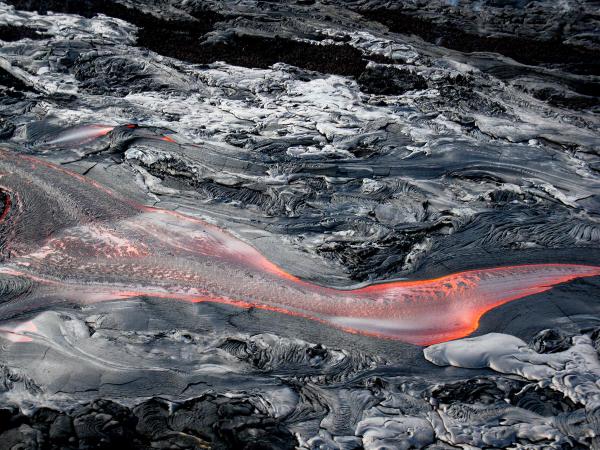
Aftermath of Hawaiian Lava Flow Caught on YouTube

Hawaii's youngest volcano is also one of the world's most active, and it's been acting up a lot lately.
Lava that has been flowing down the slopes of Mount Kilauea has torched two houses in the nearby neighborhood of Kalapana Gardens.
But the piping hot lava flowing in this area toward the Puhi-o-Kalaikini ocean entry has since stalled, according to the Hawaiian Volcano Observatory in Pahoa. Only a small amount of lava was dribbling into the ocean as of Dec. 1.
A new breakout in the underground tube that was feeding these flows seems to be siphoning off the lava, said Janet Babb, a geologist with the U.S. Geological Survey in Hawaii. Babb said that Hawaiian Volcano Observatory geologists plan to fly over the new breakout to see where the lava may be headed next.
Kilauea means "spewing" or "much spreading" in the Hawaiian language, referring to the volcano's frequent outpouring of lava. The Pu?u???? cone, one of several on Kilauea, has been continuously erupting since 1983, making it the longest rift-zone eruption lava spilling out of the side of a volcano, instead of the top, where the ground has ripped open of the last 200 years. Since 1952, there have been 33 eruptions, not including the current episode.
The volume of erupted material from Kilauea covering the land there is enough to pave a road across the world three times, making it one of the most active volcanoes on the planet.
Over time the lava pouring into the sea builds a delta, extending the shoreline of Hawaii. From November 1986 (when lava from the current eruption first reached the ocean) through December 2009, Kilauea created 475 acres (192.3 hectares) of new land.
Sign up for the Live Science daily newsletter now
Get the world’s most fascinating discoveries delivered straight to your inbox.











